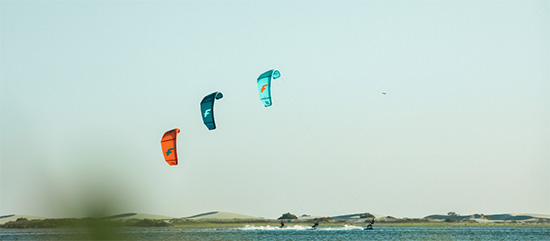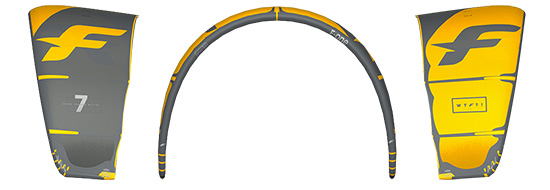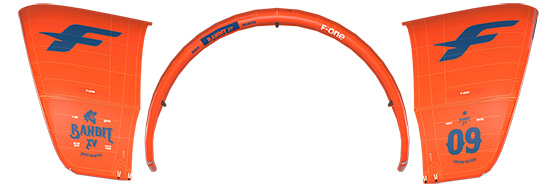
This week is dedicated to kiting and we will present most common kite models and their shapes a little bit more in depth. We will make comparisons between the C and delta kite models, their aerodynamic shapes, properties and our preferences.

C kite:
C kite was the first form to appear on the market in 1998.
We call it C because its shape is similar to the letter C.
The rope is attached to the C Kite at the end of the wing tips. The difference between the fastening of the main ropes and the steering ropes is very small, 40-50 cm. As a result, its change in angle of incidence is very small. Also, its wind window is narrower.
This means that the C Kite has a smaller wind range, and consequently, due to the smaller angle of incidence, the C Kite has a lower efficiency when driving in the wind.
Therefore C kite generates a lot of force in a small area and consequently due to these characteristics, it is suitable for freestyle, especially acrobatics, which originate from wakeboarding.
However, the C Kite is not suitable for beginners as it is difficult to lift out of the water, has a small wind range and poor response to gusts of wind.

Delta kite:
2007 is considered to be a major shift in the development of kiting and bringing kiting closer to the general population.
With the development of delta kites, F-one has brought great progress in the safety and learning of kiting, as delta combines all the advantages of C kite and Bow Kite in one.
Its best features are easy lifting of the kite from the water, wide wind range and consequently a large change in angle of incidence, wider wind window and more constant kite force through the wind window, which allows even traction due to its aerodynamic shape and shorter bridles.
Delta is by far the best versatile kite that can be used by both beginners and professionals.
Currently, F-one is an inventor, innovator and the best delta kite manufacturer on the market, and you can now get them from us at great prices!

